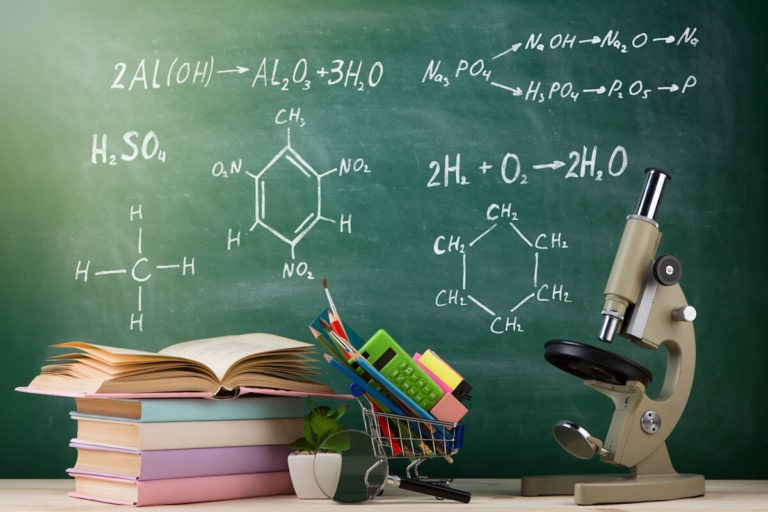In our ever-changing world of education, we as educators are constantly seeking new and innovative ways to bring standards and benchmarks to our students. While integrating subject areas is not a new technique, it is still a viable teaching tool. Integration of subject matter requires excellent planning, collaboration, and patience from everyone involved.
Integrating subject matter also gives students opportunities to grow in each discipline while using the same overall theme. The list of options for integration is as great as the imagination of the teachers developing the concept. Integration also allows teachers to step out of “what they have always done” with fresh, innovative ideas and concepts.
Science and Math
Integration of science and math, for the most part, is a natural collaboration. From measurements to calculations, math is used in science in most areas. Here are a couple of lesson ideas to integrate science into the math curriculum.
States of Matter
In this study, students investigate matter using a particle viewer and check off on a chart solid, liquid, or gas for different items they come in contact with. After examining all the items presented, the students can then count their tallies for each category. This allows kindergarten, first, and second grade students to organize information and interpret from their data. This can stimulate deeper learning through the asking of questions in both the science and the mathematics field. This is an excellent lower elementary activity.
Newton’s Three Laws of Motion
Explanation and study of Newton’s Laws can be fun and exciting for students. While each of the three laws are detailed and specific, the overall concept of each tends to promote interest and desire for hands-on activities within the classroom. While the gist of Newton’s Laws is taught in science, a natural carryover into the mathematics classroom is easy to integrate.
Students can take the data from experiments in science into the mathematics classroom for further study. By integrating Newton’s Laws in mathematics, students will have more questions that lead to a deeper understanding.
Science and Reading/ELA
The concept of science and reading being integrated should be an obvious marriage. If one cannot read, studying science can become difficult. Therefore, as educators, we should strive to involve reading/ELA with our science whenever possible.
The reading/ELA classroom can support science by following up on reading materials assigned and interpreting data, as well as teaching and supporting nonfiction reading skills. Further, the English teacher can encourage students to write freely about their hands-on experiences while in science. Science can support ELA by encouraging students to think critically while reading science reports, graphs, and even documentaries.
Additionally, students that need some extra work in reading can be encouraged to read science materials based on their current studies in the science classroom. The hope here is that the student will be excited to read more about what they are doing in science which in turn supports more reading for comprehension.
Science and Social Studies
The age-old question from students in social studies is: why do we have to study things about the past? Science and social studies teachers can collaborate to bring interesting discussion to both classrooms simultaneously. As science teachers teach about past scientists and others that have contributed to the field, the social studies teacher can assign research and study about those people’s pasts.
Additionally, science teachers can also expound upon how some things used to be done by others and how they are done now because of technological advancements. By collaborating, the teachers can teach about the same topic, but with several interesting variables under the subject matter they are teaching.
Science teachers and social studies teachers can also teach about cultural differences within our world today across the curriculum. Focus on science in more developed countries is more of a priority, while in some third world countries, scientific development is not pursued on the same level. Both science and social studies classrooms can explore these differences and examine why this is as a part of their lesson plan. Additionally, critical thinking towards this subject can lead to excellent discussion in both classrooms.
Science and the Arts
While science and the arts, on the surface, might not seem to yield easy opportunities for integration, they can with some vision. Integration of science and the arts can be easily attained at the elementary level. Science teachers can teach about colors and mixtures. This easily excites elementary students when you allow them to play in the paints. Critical thinking comes into play when students are asked what colors will be created by mixing two colors. This can be integrated into the art class by taking the newly developed and the base colors from the science room into the art room to create elementary masterpieces that can be displayed in classrooms, hallways, and other public areas for all to see.
Science and P.E./Health
Science, P.E., and health are natural integrators, especially in the area of movement. One such idea might be Newton’s Laws of Motion. While the concept of Newton’s Three Laws of Motion is being described and shown in the science classroom, the physical education teacher can derive ways to show those laws in everyday movement. Also, a science and health lesson that describes the importance of exercise and movement would be easy for integration.
It is important to note that integrating across the curriculum in all subjects is crucial for driving deeper learning. When this is done, students tend to be excited about the subject area and the fact they are learning from different perspectives. Integrated teaching also promotes positive teacher collaboration.




